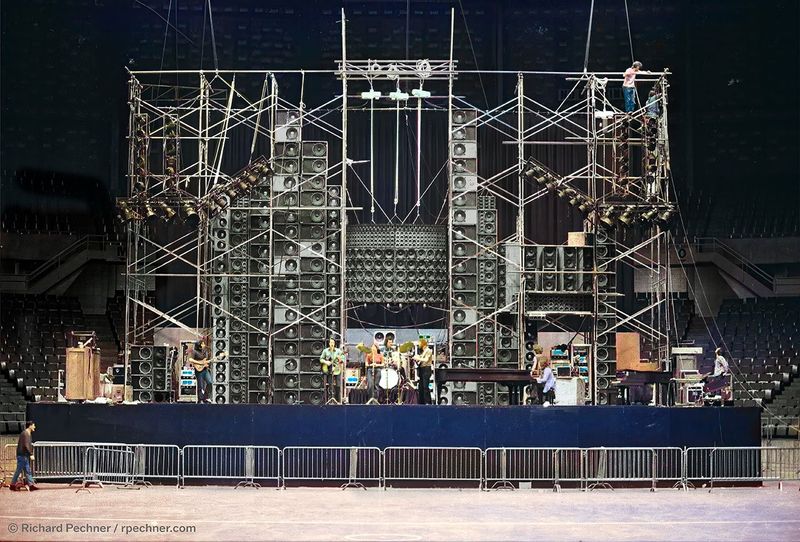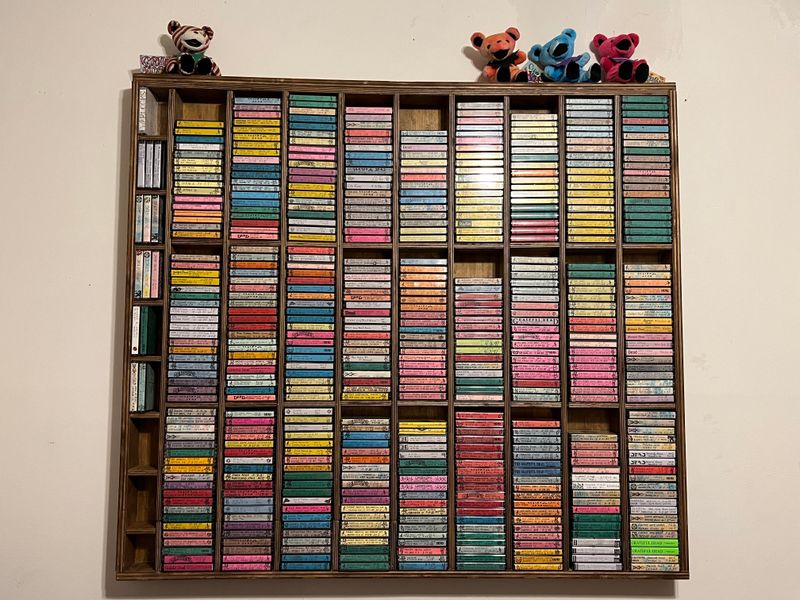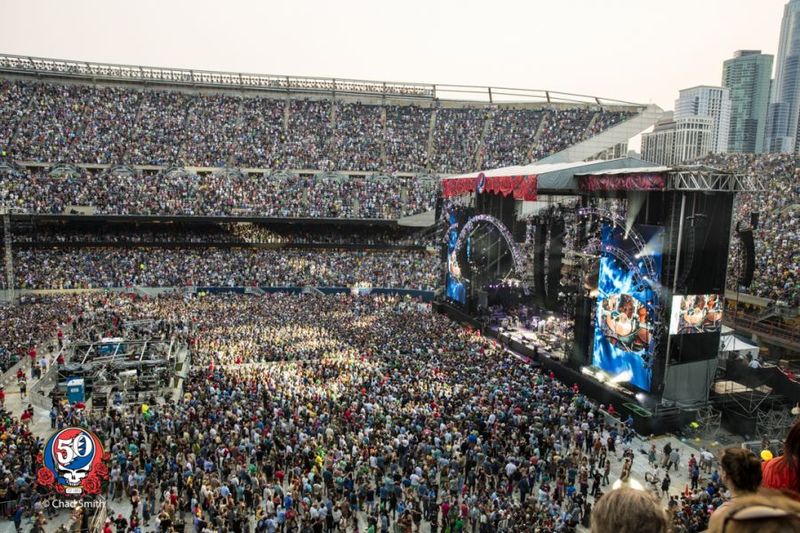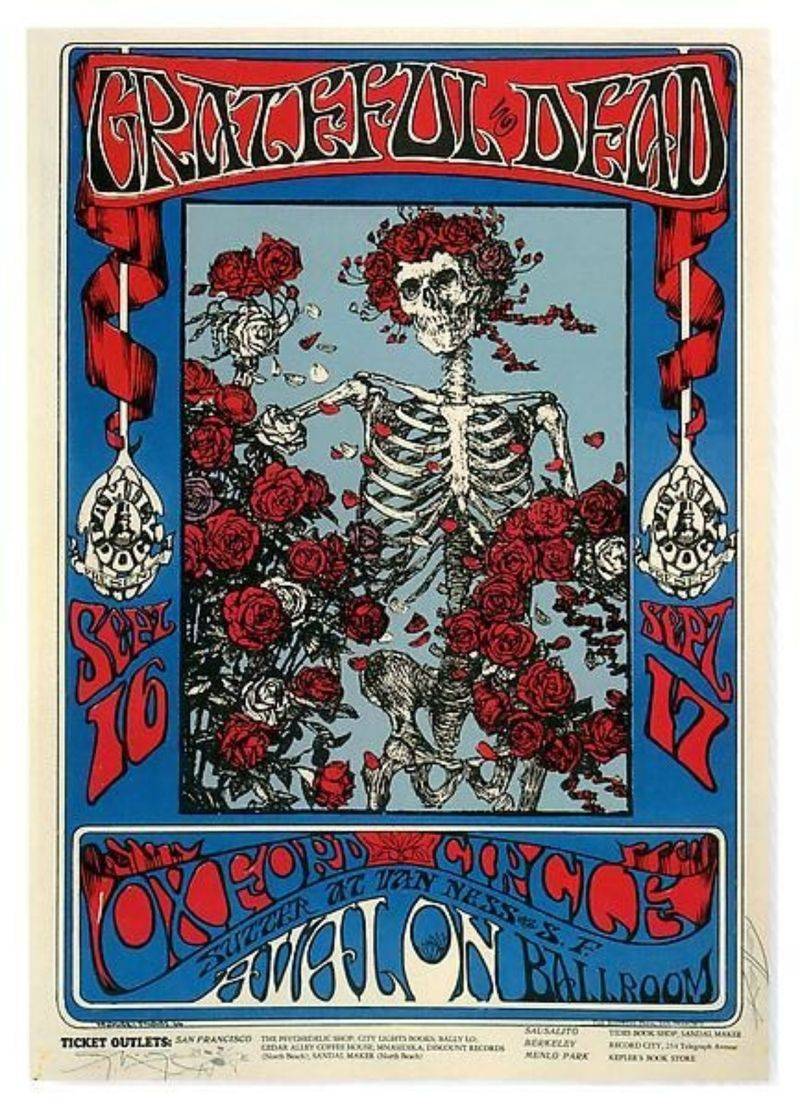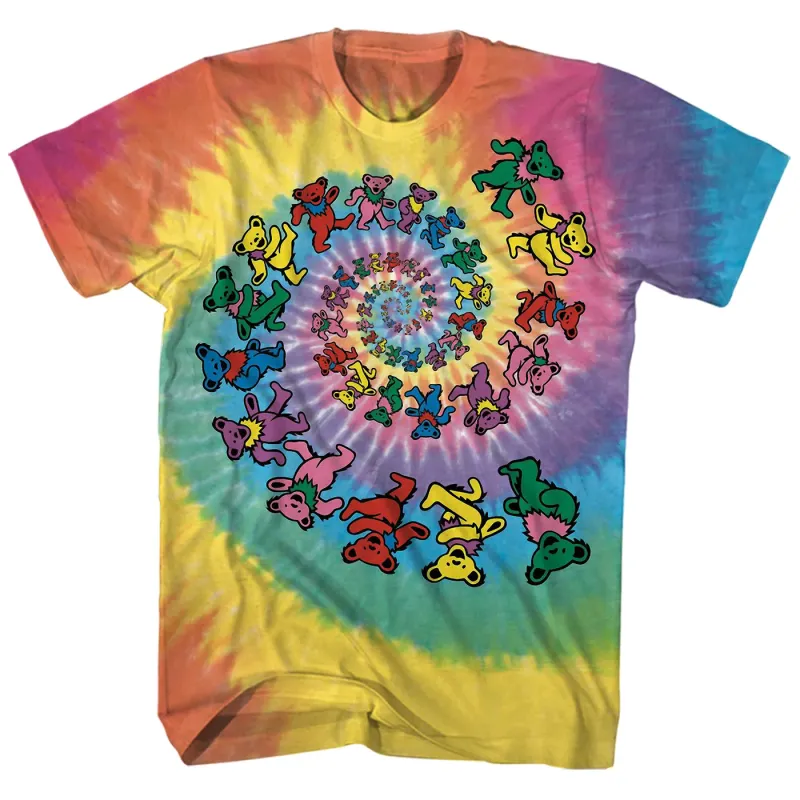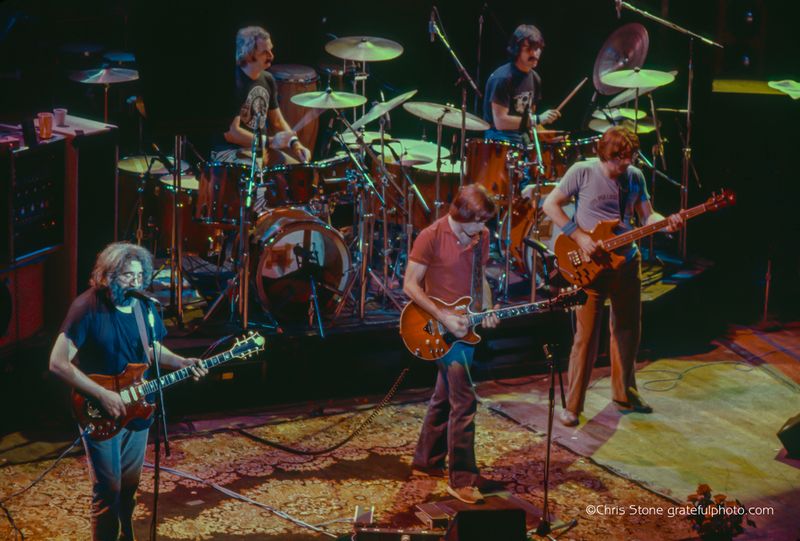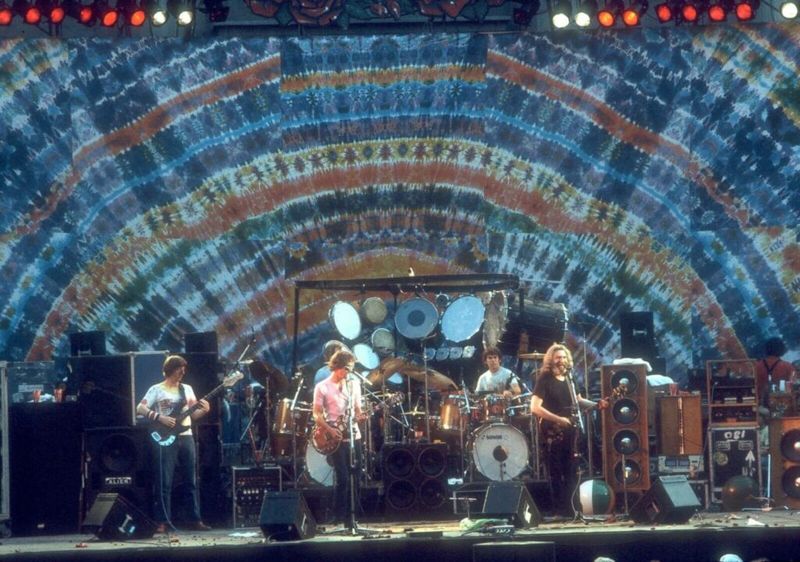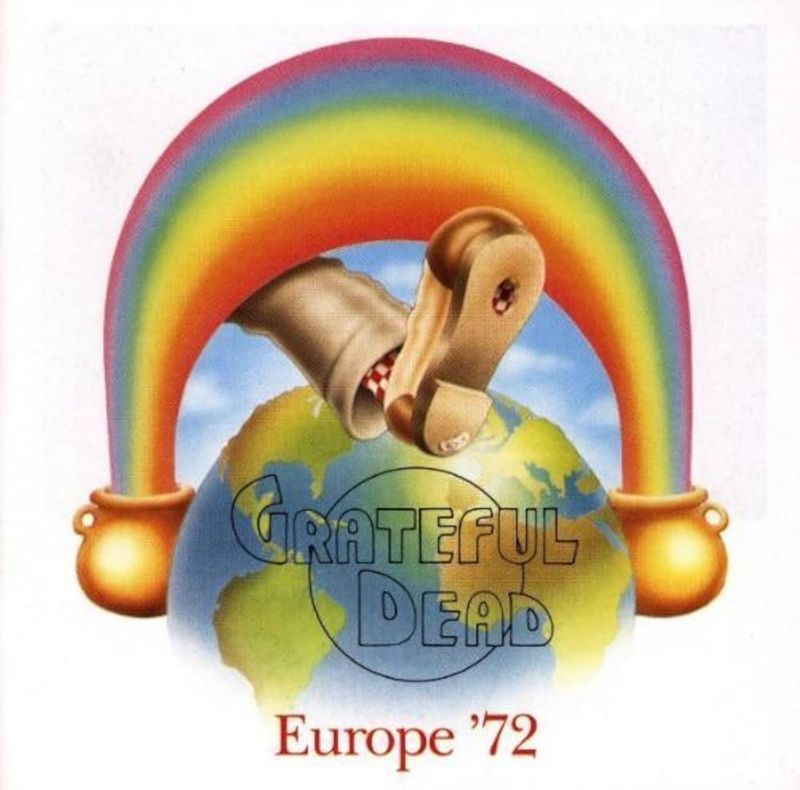The Grateful Dead, an unprecedented force in the music world, left an indelible mark on live music. Their innovative approaches and cultural influences continue to resonate across generations. From their unique concert experiences to groundbreaking sound systems, they transformed the very essence of live performances. This exploration delves into twelve key ways in which the Grateful Dead forever altered the live music landscape.
1. The Birth of the Jam Band Scene
The Grateful Dead pioneered a concert where each note is a surprise, a journey through musical landscapes uncharted, with their live performances, blending rock, folk, blues, and jazz into unpredictable, ever-evolving sets. Fans were treated to concerts that were never quite the same, fostering a sense of community and connection through shared musical exploration. This approach gave rise to the jam band scene, inspiring bands like Phish, Widespread Panic, and Dave Matthews Band to embrace extended jams and setlist spontaneity. Their legacy lives on in the improvisational freedom celebrated in modern live music.
2. Wall of Sound: Reinventing Live Audio
In 1974, the Grateful Dead didn’t just play music; they redefined how it was heard. Enter the Wall of Sound, a towering, custom-built PA system designed to eliminate audio distortion. Each instrument had its own stack of speakers, creating a clear, immersive sound experience for audiences. This innovation set new standards for concert sound engineering and was a precursor to today’s sophisticated line array systems. The Wall of Sound wasn’t just about volume; it was about clarity and quality, a testament to the band’s dedication to delivering the best possible live music experience.
3. The Tape-Trading Revolution
The Grateful Dead encouraged fans to record and trade live shows, sparking a bootleg culture that prioritized live performances over studio albums. This tape-trading revolution allowed fans to relive concerts and share the experience with others, creating a sense of community around the band’s music. It paved the way for digital concert-sharing platforms like Nugs.net and Archive.org, and inspired bands like Pearl Jam to embrace fan recordings. The Grateful Dead’s openness to fan recordings transformed how music was circulated and appreciated, emphasizing the communal aspect of live music.
4. Marathon Concerts (No Two Shows Alike)
What made a Grateful Dead concert truly magical was its unpredictability. Each performance was an unrepeatable experience, featuring 3+ hour shows with no repeats, turning concerts into unique events rather than album-promotion stops. This approach emphasized spontaneity and creativity, drawing audiences who craved the unexpected. Modern acts like Bruce Springsteen and Billy Strings have adopted this “no-repeat” tour model, keeping fans engaged with fresh, dynamic performances every night. The Grateful Dead set the stage for a concert culture where each show is a new adventure, fostering deeper connections between artists and fans.
5. Psychedelic Visual Aesthetics
With swirls of color and mind-bending designs, the Grateful Dead’s visual identity was as revolutionary as their music. Partnering with artists like Stanley Mouse and Alton Kelley, they crafted iconic psychedelic posters and album art that became synonymous with the era’s counterculture. These visuals were not just promotional tools but integral parts of the concert experience, enhancing the sensory journey of the shows. Their legacy lives on in modern festivals like Bonnaroo and Electric Forest, where music and visual art continue to intertwine, creating immersive and transformative experiences for attendees.
6. The Deadhead Subculture
More than just fans, Deadheads were a nomadic tribe following the Grateful Dead from show to show, creating a self-sustaining concert economy. With tie-dye vendors, veggie burritos, and a sense of communal living, they embodied a unique subculture that transcended music. This movement inspired similar fan communities, such as Phish’s “Phishheads” and festival cultures like Burning Man. The Deadhead lifestyle was a celebration of freedom, individuality, and connection, fostering a vibrant, supportive network that continues to influence fan cultures and concert experiences worldwide.
7. Merchandising & Branding Genius
Decades before platforms like Bandcamp, the Grateful Dead mastered the art of merchandising and branding. Selling directly to fans at shows, they offered tie-dye shirts, stickers, and custom posters, turning concerts into bustling marketplaces. This savvy approach not only created additional revenue streams but also built a strong brand identity that resonated with fans. The Grateful Dead set the blueprint for artist merch empires, influencing today’s music industry with strategies seen in Taylor Swift’s limited-edition vinyl drops and other artist-driven merchandise campaigns.
8. Genre-Blurring Musical Fusion
Long before “fusion” was a buzzword, the Grateful Dead were breaking boundaries with their music. They seamlessly mixed country vibes from “Workingman’s Dead” with the psychedelic trippiness of “Dark Star” and the jazz influences of “Bird Song.” This genre-blurring musical fusion inspired a new wave of artists who embraced diversity in sound. Bands like Wilco, My Morning Jacket, and Khruangbin owe a nod to the Grateful Dead’s innovative spirit. Their ability to transcend traditional genre constraints paved the way for a more fluid and exploratory approach to music-making.
9. The “On-Stage Ecosystem”
In a world focused on spectacle, the Grateful Dead found magic in musical dialogue. On stage, they faced each other instead of the crowd, enhancing communication and creating a tight yet free-flowing sound. This “on-stage ecosystem” allowed them to explore musical ideas collaboratively, prioritizing connection over performance. This approach has been adopted by jazz ensembles and jam bands that value musical conversation. It set a precedent for musicians who seek authenticity and depth in their performances, emphasizing the beauty of synergy and shared artistic expression.
10. Ticketing Innovations
In the 1980s, the Grateful Dead revolutionized ticketing by selling mail-order tickets directly to fans. This move combated scalpers and ensured loyal fans had access to their concerts. Their innovative approach presaged today’s verified fan systems, such as Ticketmaster’s “Artist Presale,” which aim to protect fans from inflated prices. By prioritizing fan access and fairness, the Grateful Dead established a model for artist-driven ticket sales that continues to influence how concerts are organized and experienced, making live music more accessible to true fans.
11. The Fare Thee Well Model
After Jerry Garcia’s death, the surviving members of the Grateful Dead continued to tour under various names like The Dead, Further, and Dead & Company. This “Fare Thee Well” model proved their music could outlive its original lineup, inviting new audiences and keeping the spirit alive. It normalized legacy acts touring with fresh faces, seen in collaborations like Queen + Adam Lambert. The Grateful Dead demonstrated that the essence of a band could transcend individual members, creating a legacy that adapts and evolves with time.
12. Live Album Pioneers
In an era dominated by studio recordings, the Grateful Dead embraced the raw energy of live performances with albums like “Europe ’72” and “Live/Dead.” These releases showcased the vitality and spontaneity of their concerts, proving live recordings could be as essential as studio work. This pioneering approach led to the rise of official live albums and inspired projects like “The Last Waltz” and “Stop Making Sense.” The Grateful Dead’s live albums captured the essence of their shows, inviting fans to experience the magic from the comfort of their homes.


